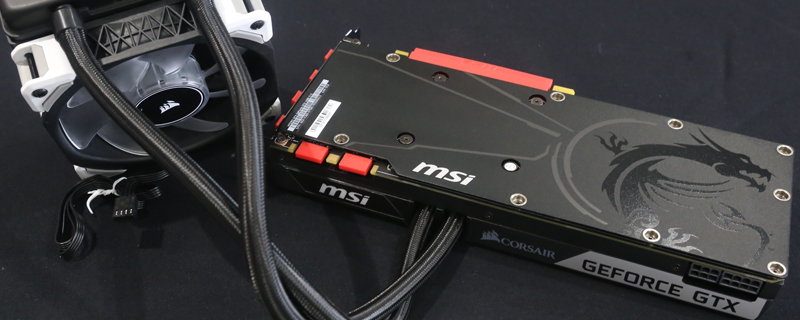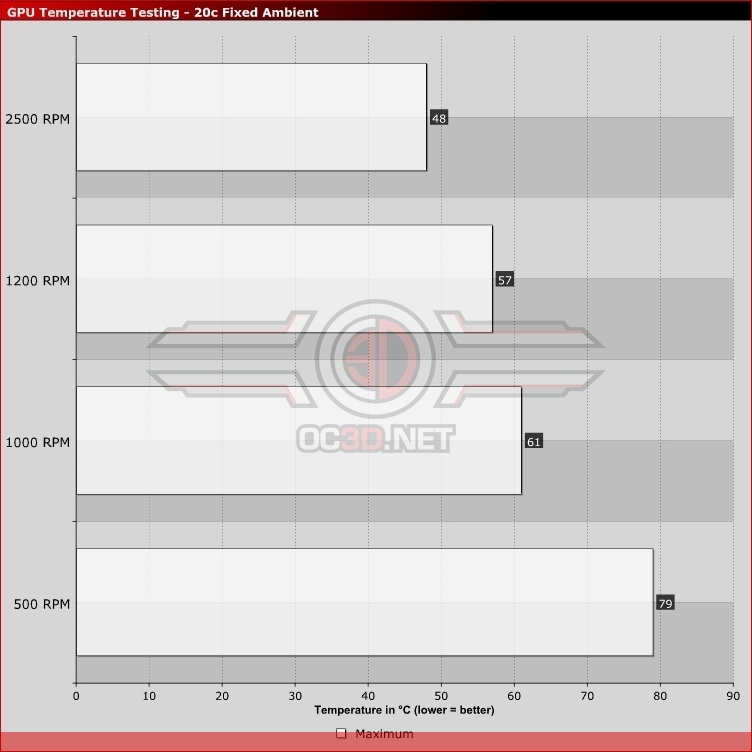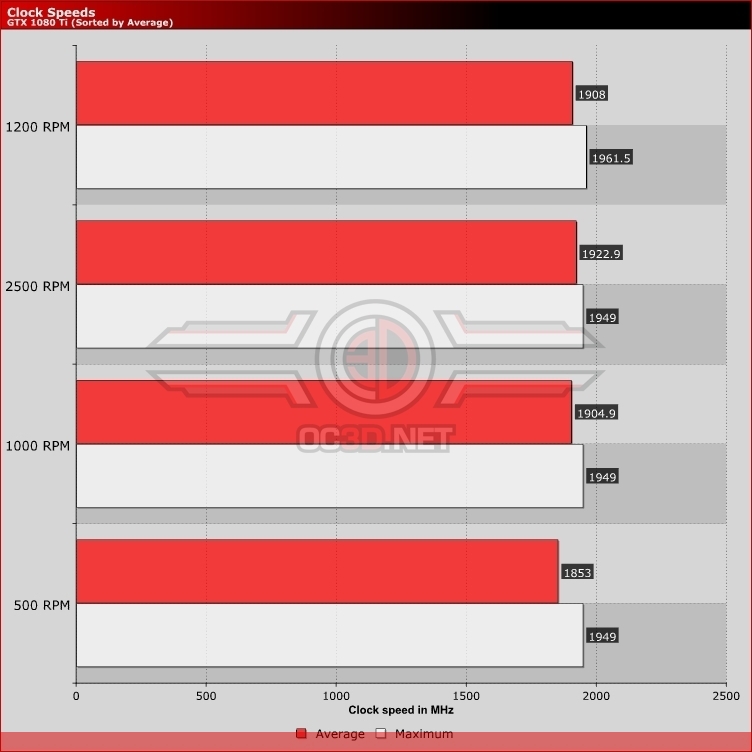Corsair Hydro GFX GTX 1080 Ti Review
Fan Speed Effects
We have a couple of surprises here. Of course it isn’t much of a surprise that with the fan at 500 RPM it just runs too hot to maintain a high boost clock average, or indeed to keep the temperatures cool. We could feel the heat coming off the pipes and the radiator itself was too hot to touch. At more realistic speeds we were surprised to find the 1200 RPM option giving a slightly higher average clock speed to the 2500 RPM option, despite being much warmer. Obviously once you get the card below 70° the differences in boost speed attainable by the nVidia GPU Boost technology with the extra thermal headroom diminish. Given the extra noise of 2500 RPM and the relative coolness and high clocks attainable at the much quieter 1200 RPM setting we’d probably use 1200 RPM if it was our system. In the temperature graph the 20° and 25° settings are to do with the air-conditioning in our test room, showing that it’s almost more important to place the system somewhere cool than it is to expect the cooler itself to supply all the frostiness. Useful for those of you who live in less toasty parts of the world.





